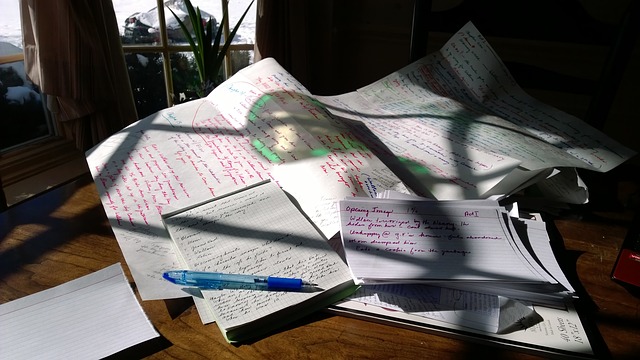A fellow wordsmith recently shared his method for writing a novel. I was so intrigued by his straightforward process, I’m sharing it with you today. If you’ve never completed a novel or if you’re frustrated with your pace, perhaps this method will give you new energy.
I call this system The Three-Pass Method. This involves writing the entire novel but does not include editing. That’s a topic best left for another post. Today we simply want to tell our tale.
The First Pass: Write the entire story in 5000 words.
My friend has done this several times. He thinks of a story idea. Then, he writes all of the main elements. This includes the main characters, a brief backstory, 3-4 pivotal scenes, and the beginning/middle/end scenarios. In one quick 5000-word sprint, he has the whole tale. He doesn’t waste his energy making the words pretty or polished. The point of this exercise is to the see the story from start to finish. When he’s done, he has the bones of a novel and can decide if he wants to pursue it further.
The Second Pass: Expand to 15,000 words by roughing in key scenes and details.
This isn’t a big leap. Moving from 5,000 to 15,0000 words is only a 10,000-word increase. You can easily reach that level by drafting 10-12 additional scenes. You already have your pivotal scenes from the first pass. So, what do your characters need to do or experience that lead them to those critical moments? Write those elements as new scenes and you’ll quickly reach the 15,000 word mark.
The Third Pass: Expand to 85,000 words by filling out the story.
This is the fun part. Up to this point, you’ve been drafting—writing the elements and marking the critical details. Now, you get to play. If you’ve been writing in dialogue, add the descriptive elements. Engage the reader’s senses. Give us a feel for the locale. If you’ve been telling the story, give us dialogue. Add that witty repartee. Let us know who these characters are through how they speak, what they feel, and the way they react physically. Based on passes one and two, you’ll know exactly where this story is going. Use all your writing skills to give us an emotional, fun-filled, scary, suspenseful, or cryptic journey to that fabulous ending.
That’s the whole system. Notice this method focuses solely on the story. Time isn’t wasted on massive editing or polishing, although some editing will occur naturally as you make each pass. The benefit of this method is two-fold: we complete a manuscript (Yay!) and we don’t edit unnecessarily. We know that with each pass scenes and details will be built upon, so there’s no need to make them “perfect” in those first and second versions. By the time we make the third pass, we know the story so well we’re automatically making better decisions with the details we include.
If you try this method, I’d love to hear your results. Now get back to writing—you have a 5,000 word draft to craft!
[bctt tweet=”Have an idea for a novel? Here’s how to draft it in 3 simple steps. #WritersRoad #HowTo”]







4 Comments
Cynthia, What great advice. Thank you. I have never written a novel. I began my writing career a year ago. I have my first non fiction, bible based book coming out next spring. These 3 steps make the task seem more doable.
I’m working on a novel now, Cherrllynn. This method is making it doable!
I’ve never heard of the “three pass method” before. I love the idea and will implement the next time I create a rough draft. Thanks for posting such an informative article.
[…] Blog Post Naming: 15.12 Writing a Novel in 3 Steps (Year.Month + Post Name) *This is a post I wrote for AlmostAnAuthor.com. Click the link in the […]